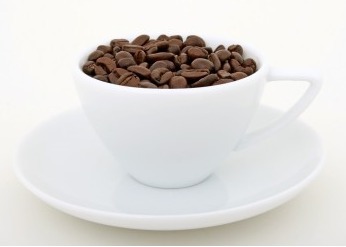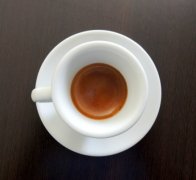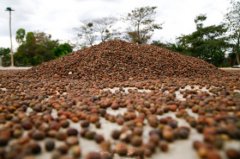Coffee roasting knowledge Coffee roasting degree Classification

New England baking (New England): light brown, dried bean noodles.
American baking (American): medium brown, dried bean noodles.
Viennese roasting (Viennese): medium dark brown with scattered drops of coffee oil on the bean noodles.
French roasting (French): moderate dark brown bean noodles with a thin layer of coffee oil.
Espresso roasting: dark brown, depending on the degree of baking, the bean surface may have only a thin layer of coffee oil, or a thick layer of coffee oil.
Italian baking (Italian): dark brown close to black with shiny bean noodles. Most bakers bake as deep as they can.
Deep French baking (Dark French) or Spanish baking (Spanish): extremely dark brown that quickly turns black and is too greasy.
Traditional American defined baking pattern name
Another is the naming rule of baking patterns that has been used in the United States since the 19th century, roughly in the following order:
Cinnamon baking (Cinnamon): very light brown.
Shallow baking (Light): the shallowest degree of American baking.
Medium baking (Medium).
Medium height baking (Medium High): American baking reaches this landing point for the longest time.
Urban high baking (City high): it falls a little deeper than American baking.
Deep City Baking (Full City): deeper than the former, bean noodles sometimes have a few drops of coffee oil.
Dark baking (Dark): dark brown, bright bean noodles, similar to the degree of Espresso baking or French baking (French) in the regional classification.
Heavy baking (Heavy) is very dark brown with bright bean noodles, similar to Italian baking.
Among the many names, the only one that can still be seen so far is the name Deep City Bake, a baking model that is a little deeper than American baking in the middle of the 20th century.
Using numbers to make up for the lack of traditional baking pattern classification: caramelization degree classification and SCAA color code discrimination system
After looking at the first two categories of baking pattern taxonomy, do you feel confused? Yes, in order to solve the problems caused by both, the American Fine Coffee Association (SCAA,Specialty Coffee Association of America) has specially developed a set of auxiliary tools that allow us to judge the degree of baking coloring with more accurate instruments.
In this set of aids, there are eight references, no names, only numbers, which accurately correspond to eight well-designed baking depth color codes. The method of interpretation is to grind a sample coffee bean into powder by fine grinding and pour it into a special shallow pan before it can be fed into a measuring instrument loaded with a chemical index or caramelization measurement benchmark to begin comparison with the color code, and the depth of these sample coffee beans will be classified to the nearest "caramelization degree" (Agtron). The numerical range of the caramelization degree for the color code is # 95 (the lightest baking depth), # 85 (this shallow baking depth), and up to # 25 (generally the deepest baking depth).
Important Notice :
前街咖啡 FrontStreet Coffee has moved to new addredd:
FrontStreet Coffee Address: 315,Donghua East Road,GuangZhou
Tel:020 38364473
- Prev

Coffee brewing tips provide you with the following tips
From green beans to a cup of strong espresso, every step in between is very important and affects the quality of the final product. While you know how to choose the best and most appropriate coffee beans, you must also know which brewing method to use in order to achieve a perfect cup of coffee. Knowing how to make the perfect cup of coffee is like knowing how to use it.
- Next

Introduction to coffee roasting hand-net roasting
A few days ago, Meng long came to Hao Fang Coffee Shop to buy coffee beans. He is an expert at roasting at home. There are more and more friends like him, and Uncle Dou is now starting to pack raw beans into small packets to share with his baked friends. There are only two varieties, but there will be more and more. It is a pleasure to discuss with friends who play baking. If your friends who play baking at home buy small ones.
Related
- Beginners will see the "Coffee pull flower" guide!
- What is the difference between ice blog purified milk and ordinary milk coffee?
- Why is the Philippines the largest producer of crops in Liberia?
- For coffee extraction, should the fine powder be retained?
- How does extracted espresso fill pressed powder? How much strength does it take to press the powder?
- How to make jasmine cold extract coffee? Is the jasmine + latte good?
- Will this little toy really make the coffee taste better? How does Lily Drip affect coffee extraction?
- Will the action of slapping the filter cup also affect coffee extraction?
- What's the difference between powder-to-water ratio and powder-to-liquid ratio?
- What is the Ethiopian local species? What does it have to do with Heirloom native species?

